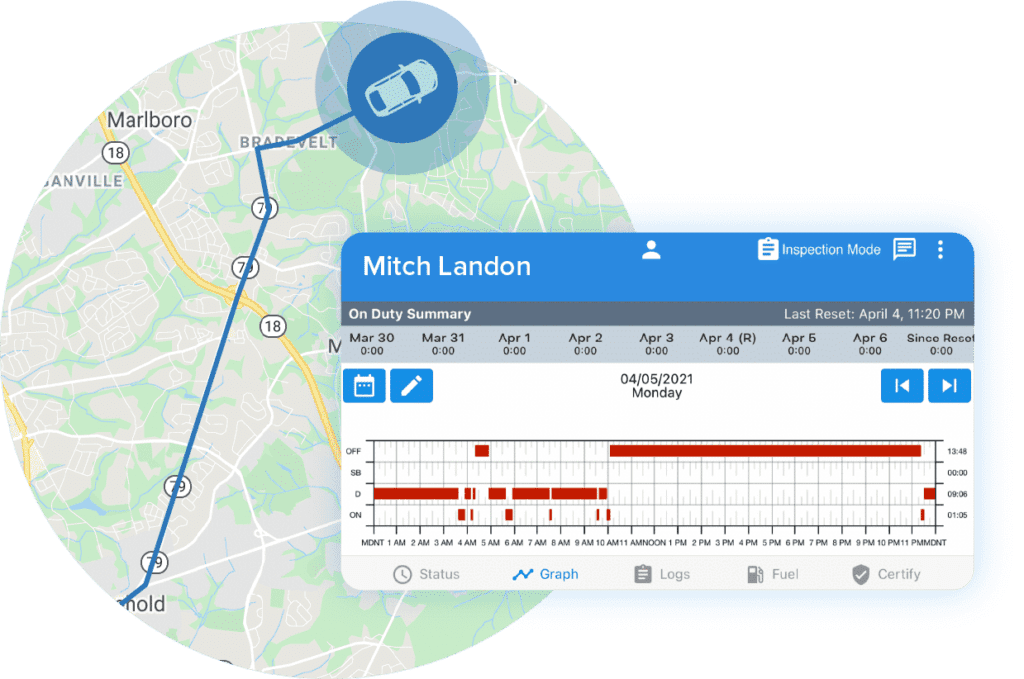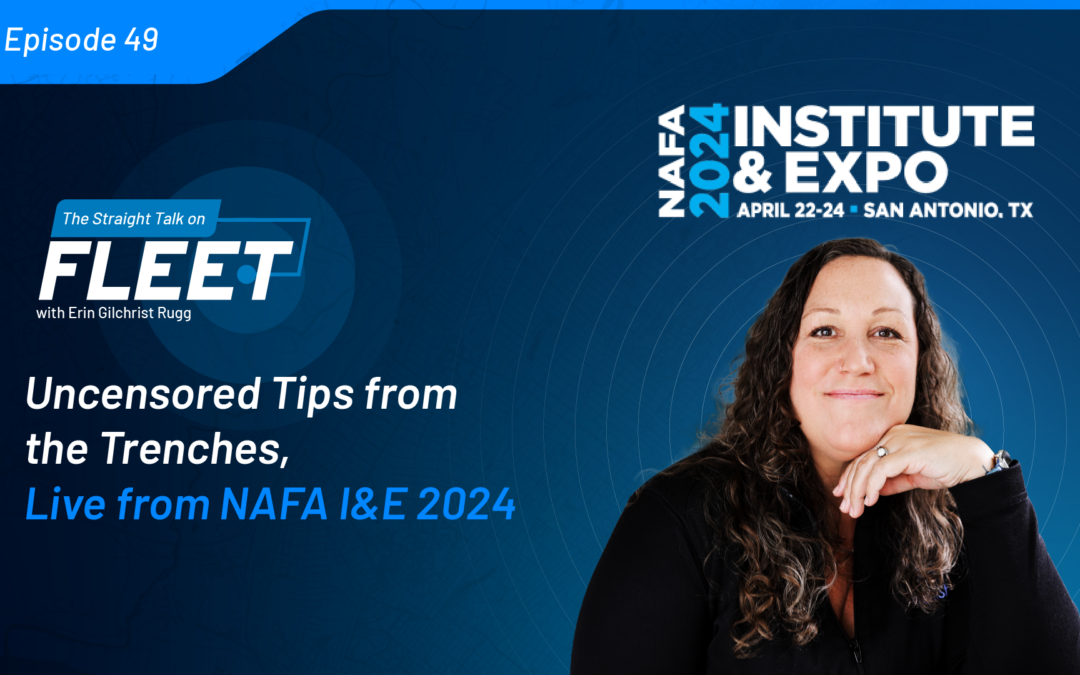AOBRD vs ELD. This is a concept that many fleet and compliance managers have had to study up on recently.
Historically, truck drivers have been required to record their hours of service (HOS) by filling out paper logs. Then as the industry evolved, automatic on-board recording devices (AOBRDs) were introduced. Now years later, the federal government requires the use of electronic logging devices (ELDs). Both an AOBRD and ELD are considered more reliable and accurate than paper logs. For one thing, they can both electronically transmit HOS information to a database or make it available to the Department of Transportation authorities. Moreover, electronically logging HOS prevents drivers from following schedules that violate safety regulations.

What is the ELD Mandate?
The ELD mandate is a U.S. Federal Government regulation stating that commercial motor vehicle operators covered by this law are required to use ELDs. The rule was instituted to create a safer work environment for drivers and facilitate accurately tracking and sharing records of duty status (RODS) data. By making it easier to record HOS, the mandate helps reduce driver fatigue and minimize potential accidents.
What are AOBRDs?
An AOBRD connects to a vehicle’s engine to record date and time, engine hours, miles, drive times and locations. The display and data recorded on an AOBRD are not as detailed as an ELD. While both AOBRDs and ELDs are used to record a commercial driver’s HOS, an AOBRD may not meet all the requirements specified in the ELD mandate. According to the ELD mandate, all commercial motor vehicles operating in the United States subject to the law must have drivers recording their HOS using a registered ELD.
What are ELDs?
An ELD automatically records a driver’s driving time and other data. This allows easier, more accurate record keeping. An ELD monitors a vehicle’s engine to capture whether the engine is running, the truck is moving, and the duration of engine operation. Law enforcement can review a driver’s HOS with an ELD by viewing the display, via a printout from the ELD, or retrieving data electronically. Manufacturers must self-certify that ELDs meet technical standards in the ELD mandate and register with the FMCSA. Carriers and drivers can only use ELDs that are certified and registered on FMCSA’s website, as other devices may not be compliant.
What are the differences between AOBRDs and ELDs?
There are many key differences between AOBRDs and ELDs. The main distinction is that AOBRDs are not as accurate and do not record or display as much data as ELDs. The information below provides a detailed comparison of both types of devices:
| AOBRD | ELD | |
|---|---|---|
| Drive Time | Can reclassify drive time | Driving time can’t be changed or edited |
| Inspection | Roadside inspection allows for log display | Roadside inspection asks for output file. Must be able to transfer data via either telematics or local methods. |
| Automatic record | Not required to record driving status automatically | Speed threshold for drive time set at 5 mph automatically unless Yard Move (YM) or Personal Conveyance (PC) are selected |
| Log Edits | Notes not required on log edits | Notes required for all log edits |
| Location | Location records can be automatic or manually recorded | Automatically captures location coordinates with accuracy |
| Log Suggestions | Notes not required on log suggestion | Notes required for all log suggestions |
| Audits | Allow printed or email logs | Require output file |
| Driving Events | Can reassign driving events to any driver | Can only reassign driving events to co-drivers |
| Suggested Edits | Suggest edit to reclassify drive to YM/PC or YM/PC to drive | Only suggest edit to reclassify YM/PC to drive |
| Driver Warnings | Not required | Warn drivers about unassigned drive time and miles recorded |
| Duty Status Changes | Not required | Required to change a driver’s duty status when the vehicle is not in motion for more than six consecutive minutes |
| Unidentified Trips | Not required | Must record unidentified driving trips when the vehicle is driven without a driver logged in |
| Yard Move / Personal Conveyance | Not required | Requires the carrier to control permission to enable driver to use Yard Move or Personal Conveyance statuses. Driver selects the option and annotates the reason. |
| ELD Records | Not required | Driver able to review, edit and annotate driver’s ELD record |
Should you replace or upgrade your AOBRD?
The primary reason to replace or upgrade your current AOBRD is that it is no longer compliant. The U.S. Federal Government now mandates that all truck drivers have an ELD unless they meet certain exemptions, which include:
- Drivers who are not required to maintain a RODS
- Operators in certain Driveaway-Towaway operations
- Drivers with vehicles that have pre-2000 engines
- Operators who only maintain RODS for eight days or fewer in a rolling 30-day period
Carriers who are not ELD-compliant can face severe penalties. For example, drivers can be removed from service until they are fully compliant. The penalties can also negatively impact your compliance, safety, accountability score (CSA score). Finally, non-compliance can also result in hefty fines. In addition to accruing citations, violations can cost anywhere between $1,000 to $10,000.
How do you make sure your ELD is compliant?

To ensure your ELD is compliant, check if the solution is included in the FMCSA’s list of self-certified ELDs. These vendors have self-certified that their product is compliant and registered each ELD model with FMCSA. You will also want to check the list of revoked ELDs to make sure your ELD is not on that list. Once you narrow in on a provider, check with the Better Business Bureau and read online reviews for their products. While some ELDs may be part of a Fleet Management System, it is not a requirement.
IntelliShift’s ELD solution
One way to integrate a compliant ELD solution into your fleet safety and compliance strategy is to consider IntelliShift’s Logbook. Logbook is an ELD point solution on the IntelliShift platform that provides complete driver data visibility. This solution helps you accurately track and record mandated HOS to increase safety and avoid costly violations. Using a convenient checklist, it also allows drivers to perform comprehensive inspections before and after their shift efficiently. Then when issues arise, real-time alerts are sent to dispatch and operations staff to initiate maintenance. In addition, mobile-friendly software and applications offer a full suite of compliance features, including meeting the ELD mandate, driver vehicle inspection report (DVIR) safety inspections and IFTA fuel tax. The advantage of Logbook is that it works in tandem with IntelliShift’s vehicle telematics, so you can get vehicle tracking, performance data and ELD technology in one solution.
Learn more about ELD Logbook
Don’t be left exposed to non-compliance. Instead, replace or upgrade your AOBRD today and enjoy the benefits of increased safety and productivity.




![Episode 50 Thumbnail Erin celebrates building the fleet community with 50 episodes and 11K followers on LinkedIn [Podcast]](https://intellishift.com/wp-content/uploads/2020/07/TRUCK2-scaled-1.jpg)



